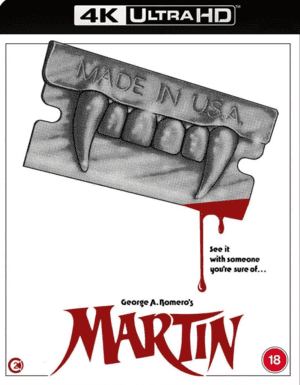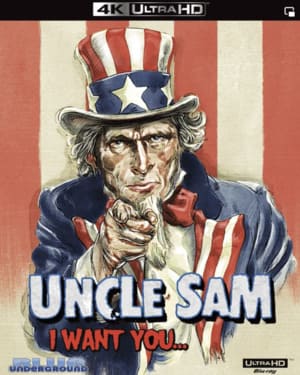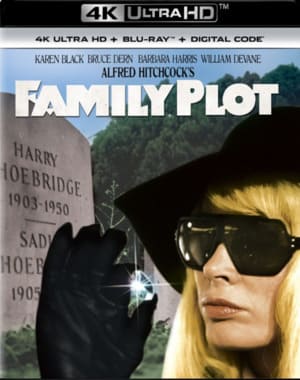Story Movie
![Martin 4K 1976 Ultra HD 2160p]()
Teenage Martin moves in with his native uncle in another town and while still on the train attacks a defenseless girl in order to have fun and drink her blood. In his new place, Uncle Cuda immediately makes rules: don't kill anyone in town and don't talk to his granddaughter. Garlic is hung all over the house, but like crucifixes, it doesn't deter Martin. The uncle is convinced that his nephew is a nosferatu, the curse of the family, and his granddaughter thinks the boy has a slight nervous breakdown.
Review 4K Movie
The opening shots of "Martin" seem deliberately designed to throw you off-balance. The mechanical sounds of a train blending into the unsettling melody of a bad road trip adventure. Businesslike manipulation of a syringe: a close-up of the trembling sting of a medical needle. A brief struggle in a semi-darkened compartment, timid, almost chaste kisses and razor, thoughtfully placed on the bedside table. Bloody mouth, orgasmic convulsions. We may never know anything concrete about the young man carefully wiping surfaces and directing the suicide scene, just scraps of phrases, absurd assumptions, the shaky swamp of the mentally ill's memory. But one thing is certain: Martin kills. And he enjoys part of the process.
The vampire plot has been firmly embedded in popular culture since its actual inception - injecting poison into a defenseless infant's neck. Cinematography not only opened the door to the collective unconscious to the bloodsuckers, but, guided by an unmistakable sense of profit, helped them to maintain a semblance of eternal youth, taught them to change, adapting to the demands of a capricious public. Martin, in a succession of fanged masks, is seen as an alien, a guest who wandered into the wrong party. It is not even the stressed doubtfulness of his species identity, which makes possible two equal readings of the film (depending on the viewer's preferences, the hero can be perceived both as a genuine nosferatu, devoid of mythological halo, but not of predatory nature, and as a mentally retarded young man whose mania was influenced by family lore imported from Eastern Europe). In the end, it's just an intellectual trick not devoid of finesse; the director himself is not looking for clues and has very little interest in the motivation of the clumsy evil being mended. The difference in Romero's treatment is different. Where his colleagues exploit mysticism to achieve a horror effect, he turns to ordinariness. While others mark erogenous zones, be it interest in forbidden fruit, excitement at the sight of violence or dreams of immortality, he explores areas of unconscious anxiety.
The picture barely touches the lower physiological level of our fears. It is skimpy on scarlet tones and explicit shots. The plot mostly revolves around the character's elusive personality and his complex relationships with other people, but even in the murder scenes there is panic rather than pain, exactly like surgery under local anesthesia. Martin's violence is at times painful, awkward and unbearably drawn out ("please, please, stop screaming"), then rudimentarily aesthetic, and - without eroticism, at the level of pure visuals. The drowsy victim is forcibly frigid, the rapist suffocates from the rush of arousal, but the aftermath of the act is a residue of dissatisfaction, and the viewer is left to admire the falling scarlet drops and the whimsical curve of her outstretched arms. And yet, at the bottom of this impartiality is a cold, ingratiating horror. The director directly strikes at the subcortex, appealing to a primal fear of the dark, a paralyzing powerlessness in the face of the unknown. Stoker, in Stephen King's apt phrase, created his monster the same way a child creates a giant shadow on the wall: hiding it from direct view, deliberately bringing it into the narrative margins. Romero, on the contrary, seems to place John Emplas's face in the center of the frame, keeping an unbroken eye on his character (black and white scraps of phantom memories, anonymous confessions on the local radio wave), but in fact comes out with the same frightening reticence. Eternally teetering on the brink of absolute self-control and fear of failure, Martin remains an enigma, a dangerous stranger with a listlessly lowered lip and brooding eyes.
The second horror dominant theme is defenselessness. Romero turns the traditional trappings of the genre inside out, glimpses the gothic setting before tossing it into the dustbin of memory. Instead of the thickening twilight, there is the grayness of the coming morning; instead of the deliberate mythologizing of space, "cursed places" and "sacred things," there is the cold sterility of one's living rooms, the hopeless ordinariness of Pittsburgh neighborhoods. The disappearance of the secondary signs of vampirism: allergies to garlic, intolerance to light, a specific piety is not only part of the double play of the plot, but also the destruction of the foundation of the basics that actually allowed bloodsuckers from a nightmare to become an object of lust. Human communication with the world of the supernatural is extremely ritualized, built with a peculiar safety technique in mind. Everything is almost like in the BDSM culture that has grown from the same root: reasonableness and voluntariness, mutual restrictions, and a predetermined stop word of a silver bullet in case the evening suddenly stops being languid. The loss of these familiar things is not felt at all at first, but, lo and behold, the vampire, absent-mindedly, clearly not thinking about what he is doing, washes up in the baptismal font, and the viewer, regardless of personal allegiance to the precepts of atheism, is hit with a delayed shock, a feeling like the sudden realization that the solid grating door between you and the predator you were watching with languid curiosity a second ago is and never was locked.
There is no magic. This refrain of Martin's phrase, addressed to a relative unable to disbelieve in crosses and stakes, is both a manifesto of liberation and a complaint. The viewer and the protagonist of the film move along overlapping routes: we to another flash of a sense of our own mortality, Emplas's character to an equally vivid, but not so effectively displaced later, awareness of the hopelessness of ordinary life. Vampire charms are just a fairy tale. Violence cannot be disguised by sweet vertigo or hypnotic trance, to make it mutually acceptable. You have to face reality, to take what you want by force if you want it, and to pay, to pay, of course: false consolations, unrealistic hopes, painful minutes of waiting and fighting, until the sedative takes effect, and the object of desire finally finds the desired warm obedience.



 [/full-link]
[/full-link]
 [/full-link]
[/full-link]
 [/full-link]
[/full-link]
 [/full-link]
[/full-link]
